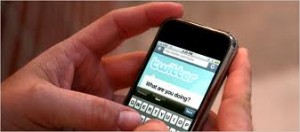In New York Times in 2009, John Markoff wrote “the four billion cellphones in use around the globe carry personal information, provide access to the Web and are being used more and more to navigate the real world.” The mobile technology already has evolved enough to create a whole new field in journalism: mobile reporting. Due to its flexibility and wide availability, mobile reporting fills the gap of coverage where professional journalists cannot fill in. Mobile technology is an essential tool for journalists, but it is also hard to adopt with its jet-fast evolution.
Mobile Journalism
- Those who practice mobile journalism are often referred as “backpack journalist” or a “mojo” (mobile journalist).
- Among one billion mobile phones sold in 2008, 100 percent offer text messaging, 92 percent have a Web browser, 90 percent have a color screen, and 71 percent can send and receive “picture messaging” and 63 percent have a camera.
- Despite these capabilities, publishing is constrained by the major telecommunication companies.
- Upcoming technologies should focus on publishing to mobile audiences to help mobile reporting evolve.
Making Mobile Journalism
Gadgets and services take up the most of what a journalist can do and cannot do. Depending on the needs, a journalist may equip with simple devices such as smartphones — Blackberry, iPhone, etc, or carry a variety of camera, tripod, audio recorder, microphone and a laptop.
The main point of mobile journalism is being available anytime, anywhere. Keep your luggage simple, and be ready to pull out your device whenever you need to.
◊ How to choose what to report
- Will the audience benefit if we can take them there?
- Will the journalism be better if it’s done with urgency?
- Can this event be effectively communicated with the given device?
- Will sound reporting or video footage, turned around quickly, help people understand the story?
◊ Some of stories that can be reported mobile:
- TrialsSpeechesBreaking news of all types — fires, shootings, natural disasters, wilderness rescues, plane crashes, and auto accidents
- Public gathering such as protests
- Sporting events
- Grand openings of shops or restaurants
As there are always many types of of anything, we also categorize mobile journalists with their equipments.
Gearhead: A mojo, characterized with heavy backpack or a shoulder bag with electronic cords sticking out, who reports all day, everday. This person always has, or wants as many as the most recent and advanced equipments available in the world. This type of mobile journalists will need
- Laptop
- Internet connection
- Camera
- Video camera
- Tripod
- Audio recorder
- Headphones
- Microphone
- Cell phone — or smartphone, rather
Light Packer: Traditional journalists who occasionally reports immediately from the field. This person has, or wants just good enough equipments. They usually bring a smartphone that has a camera that shoots videos and pictures and a full QWERTY keyboard.
Publishing Options
There are many ways to report using mobile devices from the field. One may use Twitter or Utterli.com for microblogging, laptop or more advanced apps on smartphones for live blogging, video streaming services such as Qik or YouTube for mobile video broadcasting, or combine altogether to accomplish mobile multimedia.
Mobile Crowdsourcing
Every news organization should be ready to accept photos and videos from mobile devices for breaking news. Some news organizations, such as CNN’s iReport, has already gathered a significant amount of crowds sourcing mobile multimedia feeds for their news.









